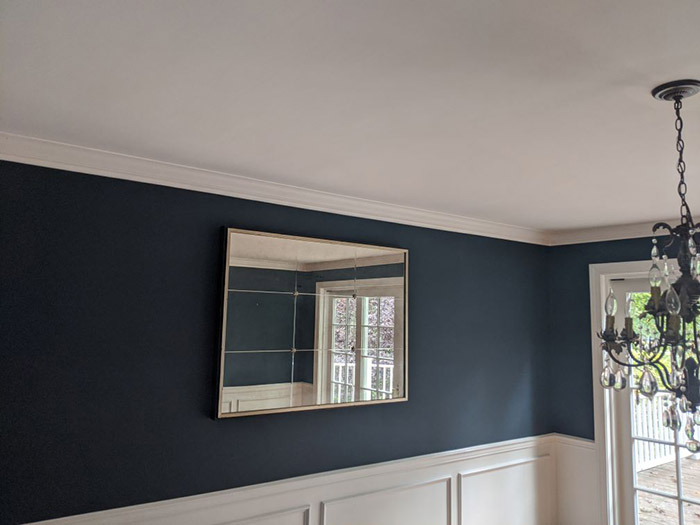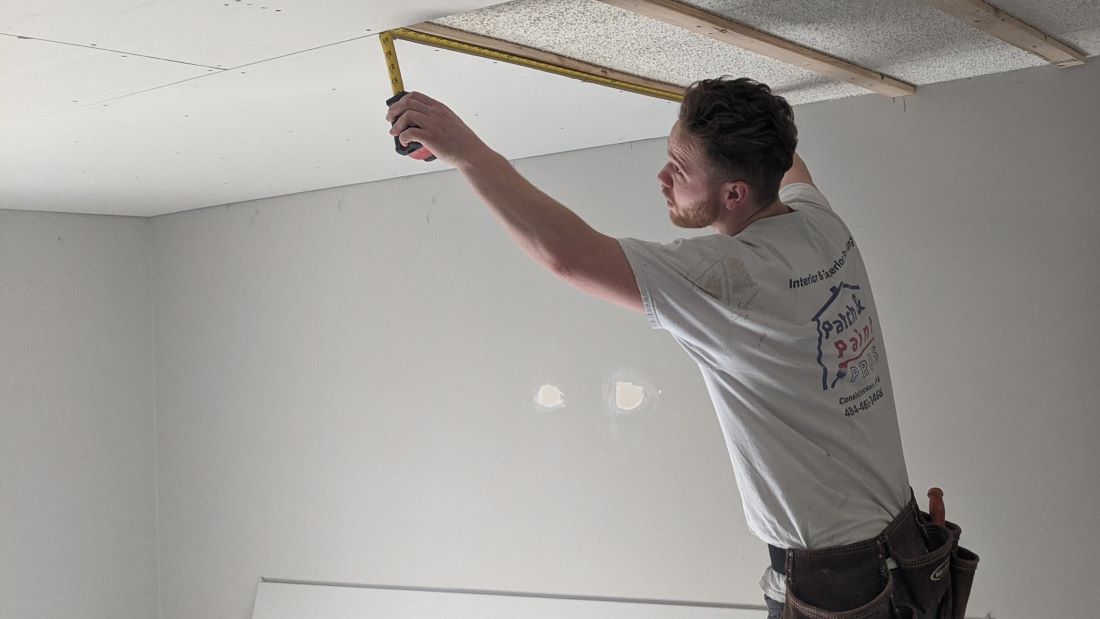As a homeowner, you know the value of making improvements to your property and creating an atmosphere that is comfortable and inviting. Have you considered adding finishing touches to your basement ceiling? It’s a surprisingly easy way to switch up any living space by transforming blank ceilings into stunning visual statements!
Finishing basement ceilings can also provide added insulation and noise reduction benefits. In this guide, we’ll explain all the appealing aspects of finishing a basement ceiling so you can make an informed decision about whether or not it’s the right choice for you. Ready to learn more? Let’s get started!
Why Should Homeowners Finish Their Basement Ceiling?
Homeowners should consider finishing their basement ceiling for numerous reasons, as there are several benefits to doing so. This could include improved insulation, increased storage space, and much more. Finishing the basement ceiling is something that homeowners should research carefully, as it can have an immense impact on the value of the home. In this guide, we will discuss the various benefits of finishing the basement ceiling, as well as the steps that homeowners need to take to get started.
Benefits of Finishing a Basement Ceiling
Finishing a basement ceiling can provide several benefits to homeowners, including improved insulation, increased storage, and improved access to wiring and plumbing. Improved insulation can help keep the basement area comfortable, while increased storage space can be used to house items that would otherwise need to be stored in other parts of the home. Additionally, having access to wiring and plumbing can make it easier for homeowners to complete necessary maintenance tasks or install new features.
Is Finishing a Basement Ceiling Difficult?
Finishing a basement ceiling does not need to be overly difficult, and it can be a worthwhile home project for many homeowners. Finishing the basement ceiling involves installing framing, drywall, and insulation, as well as venting and the installation of wiring, plumbing, and other features. The process can be completed by an experienced homeowner with the proper tools, or it can be handled by a professional contractor.
Necessary Tools and Materials
Whether you’re planning a basement remodel or basement ceiling revamp, there are some essential homeowner must-haves you need to consider. From drywall and framing materials such as studs, screws, nails, and rafters to insulation and wiring, plumbing supplies, and more – all these elements come together to create basement ceiling ideas that are aesthetically pleasing and make a great addition to your basement décor. Depending on the complexity of your project, other basement ceiling finishing materials may be required so it’s important to know the specifics of what you need before starting the project.
Steps Involved in Finishing the Basement Ceiling
When finishing the basement ceiling, there are several steps that homeowners must take. This begins with calculating the required materials for the framing and drywall, as well as making sure that the framing is straight and level. Once this is done, the insulation, wiring, and plumbing can be installed following the layout plan. After that is done, the venting and other necessary features can be installed and the ceiling can be finished.
Prepare the Space for the Project
Installing drop ceiling tiles or other materials to replace an exposed basement ceiling can be a daunting task for a homeowner. However, with careful planning and preparation, a successful drop-ceiling project can be completed by even the most novice DIYers. Homeowners must take a few key steps before beginning their drop-ceiling renovation, such as making sure any wiring or plumbing in the area is properly secured, removing any existing fixtures, like ceiling fans and lights, and covering all walls and floors with plastic sheeting or similar material to protect them during the project. The extra effort of adequately preparing the space beforehand will help ensure that the drop-ceiling installation turns out perfectly!
Secure the Framing and Drywall
After the framing and drywall have been installed, homeowners need to secure them to ensure the finished product is sturdy and safe. This can be done using screws and nails, as well as by securing the drywall to its framing using drywall tape and drywall mud. This will help ensure that the framing and drywall are properly secured to the basement ceiling.
Best Type of Insulation for Basement Ceilings
Spray foam insulation is the logical choice for low basement ceilings, as it offers a maximum amount of coverage with minimal effort. Installing spray foam insulation is much easier than trying to reach between pipes and other exposed ceiling items. Plus, unlike other insulation methods, spray foam doesn’t require cutting or stitching to fit into a low basement space. Once in place, spray foam also provides superior energy efficiency due to its superior air-sealing capabilities. Best of all, it’s highly affordable, meaning even those on limited budgets can benefit from its thermal protection capabilities. All in all, there’s no denying that when it comes to insulating low basement ceilings, spray foam insulation is an ideal choice.
Costs Involved in Finishing a Basement Ceiling
When considering a low basement ceiling, various materials can be used to ensure the job is completed properly. Wooden panels, for instance, can range in cost depending on their thickness and the complexity of the design. If a low ceiling journey involves adding recessed lighting, then there will likely be additional costs required for the installation.
Generally speaking, finishing low basement ceilings can range from a few hundred dollars to a few thousand dollars, depending on the size of the basement and the type of materials used. It’s important to take into consideration hiring a professional contractor when budgeting for this project – since having specialized experience and knowledge often adds efficiency and quality to the job being done.
Hazards Involved in Finishing the Basement Ceiling
Finishing the basement ceiling can be a tricky job and requires a lot of caution due to safety concerns. From the possibility of electric shock to the presence of hazardous materials, there are many risks to consider when completing this project.
Homeowners should never rush through an undertaking like this and instead should take the necessary safety precautions, such as wearing protective eyewear, gloves, and a mask. Doing so will allow them to properly inspect their basement floor joists for signs of damage or decay that could cause collapse or further hazards. Ultimately, following the right procedures can turn basements into safe and habitable spaces.
DIY vs. Hiring a Professional
When it comes to deciding between DIY and hiring a professional for a basement ceiling project, homeowners must take into account the benefits and drawbacks of both options. DIY projects can save money but require more time and effort. Hiring a professional, on the other hand, can be more expensive, but the project will likely be completed much faster and with better results.
Common Mistakes to Avoid When Finishing a Basement Ceiling
When it comes to finishing a basement ceiling, several potential pitfalls should be avoided. For example, ensuring proper framing and drywall installation is essential for the finished basement walls to look great and last for years. Additionally, properly measuring the area before beginning work can prevent costly errors. Quality insulation is also a must for creating an efficient space that stays comfortable regardless of the temperature outside. Lastly, ensuring correct wiring and plumbing installation is critical as any mistakes could become big problems down the road! Following these tips will help DIYers create finished basements that are safe, energy-efficient, and beautiful.
Tips for Finishing a Basement Ceiling
When finishing a basement ceiling, there are a few tips that can help make the process go more smoothly. This includes making sure to have all the necessary tools and materials on hand, as well as ensuring that the area is properly prepared and measured. Additionally, it is important to do plenty of research before starting the project and to make sure that the framing, drywall, and insulation are all installed properly.
Finishing a basement ceiling can provide several benefits to homeowners, including improved insulation, increased storage, and improved access to wiring and plumbing. Homeowners must research the process carefully and take the necessary steps to ensure that the finished project is safe and secure. With the right tools, materials, and know-how, any homeowner can finish their basement ceiling and reap all of the benefits.












